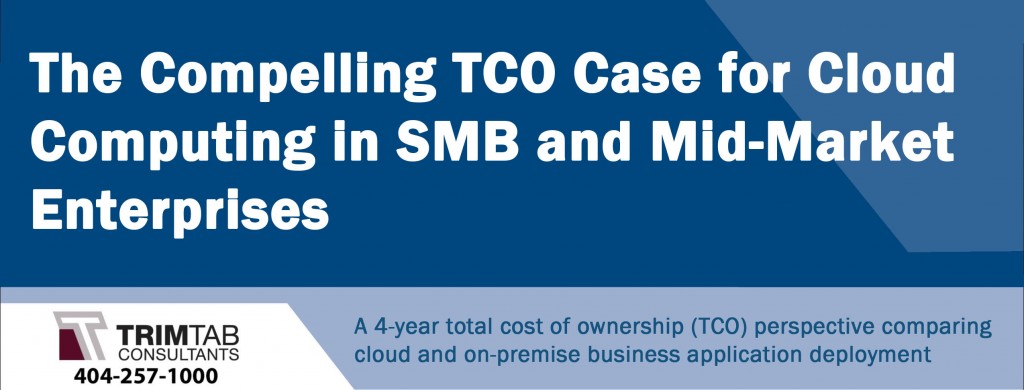Cloud computing essentially eliminates the need for customers to buy, deploy and maintain IT infrastructure or application software individually. Regardless of the application, the cloud computing vendor takes responsibility for all of the infrastructure required to run the solution–servers, backup, software, operating systems, databases, updates, migration, power and cooling, facility space, etc., and associated internal and third-party staffing costs. Because cloud computing vendors manage all of their customers on a single instance of the software, they can amortize costs over thousands of customers. This yields substantial economies of scale and skill, and lowers total cost of ownership (TCO).
Key findings from our analysis include:
- Overall TCO for NetSuite’s cloud-based integrated solution suite is significantly lower than a comparable on-premise solution consisting of Microsoft Dynamics GP and CRM. This holds true for both SMB and mid-market firms. The TCO for cloud-based vs. on-premise business application solutions was:
- 55% lower for 52 users
- 50% lower for 100 users
- 35% lower for 200 users
- IT Infrastructure costs (hardware, software and on-going maintenance required to run the on-premise business applications) account for about 11% of the total cost of deploying on-premise business applications–almost $172,500 in the 100 user scenario (Figure 1). Comparably, there are no IT Infrastructure related costs for cloud-based business solutions.
- Total Cost for cloud computing is a full $730,745 less than on-premise for the 100 user scenario. With cloud computing, the overall cost of running the solution is more predictable than on-premise. Figure 1 shows that application subscription costs accounted for 65% of the total solution cost, whereas the on-premise license cost only accounted for 26% of total cost.
- Spending for application implementation and support (including internal IT staff and/or VAR, consultant or SI resources) is significantly higher for on-premise solutions than for cloud-based solutions, as much as 3.5 times more for the 100 user scenario.
- Pre-integrated front and back office functionality in the NetSuite offering incrementally contributes to reducing integration complexity and lowers application implementation costs
